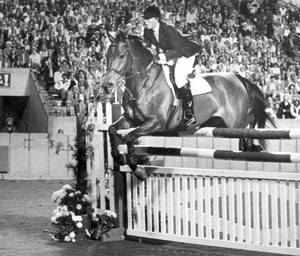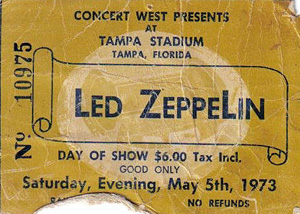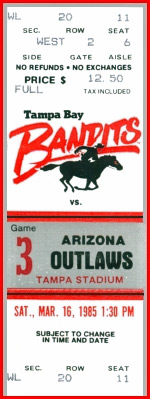|
TAMPA STADIUM / HOULIHAN'S
STADIUM a.k.a. "The Big Sombrero" |
Tampa Stadium was
the bay area's first large football facility. With an initial seating
capacity of 46,477, it was built for the University of Tampa Spartans
football team with an eye towards a potential NFL expansion team in the
future.
|
|
THE FIRST PRO GAME IN TAMPA The first professional football game in the Tampa bay area was between the Chicago Bears and the Tampa Cardinals. The game was played at Plant Field on January 1, 1926. The Bears were led by rookie Harold “Red” Grange and the Cardinals were a pickup team put together by Jim Thorpe. The game itself was billed as a clash of old vs. new, with Grange, the rising star, taking on Thorpe, the aging legend. Read about Red Grange and more about this game.
Plant Field was the
first large spectator sports facility in the area. It was built in 1889 by
Henry B. Plant across the Hillsborough River from Tampa as part of his
Tampa Bay Hotel resort. As the only facility of its kind in Central
Florida, Plant Field hosted a wide variety of events, including auto and
horse racing; pro, college, and high school football; and large political
events. It was also the long-time location of the Florida State Fair, and
the route of the Gasparilla parade would end on Plant Field's track while
the fair was in session.
|
|||||||||||
|
|
PRE-TAMPA STADIUM HISTORY AND THE AFL In 1961 Mayor Julian Lane commissioned a study on the feasibility of a football stadium in Tampa. The University of South Florida was considered as a site, but the relatively new school did not want the stadium. There was not enough support for the plan; USF was in its infancy then and Dr. John Allen (president of USF at the time) was not an athletics type guy. He knew that if the stadium was built there, he wouldn’t have a choice but to support athletics at the school. In addition to Dr. Allen’s hesitancy, there was little public support for a tax-funded stadium. So the building of a Tampa football venue was shelved.
|
||||||||||
|
Tampa mayor Julian B.
Lane and Dr. John Allen, USF's first President, |
|||||||||||
|
|

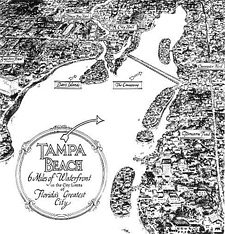








 Located on the banks of
the Hillsborough River, Phillips Field
Located on the banks of
the Hillsborough River, Phillips Field













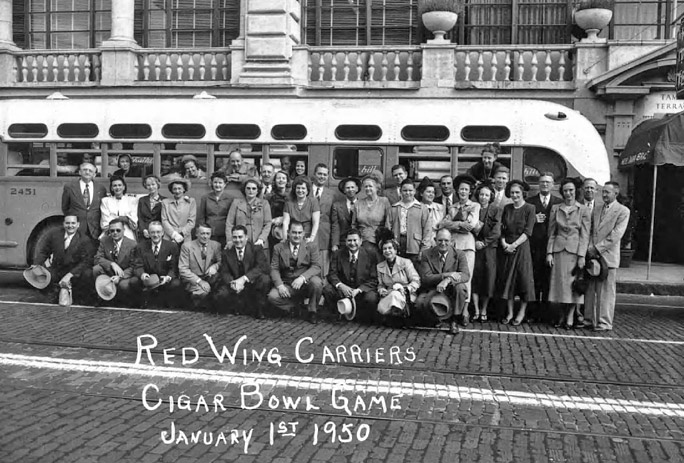







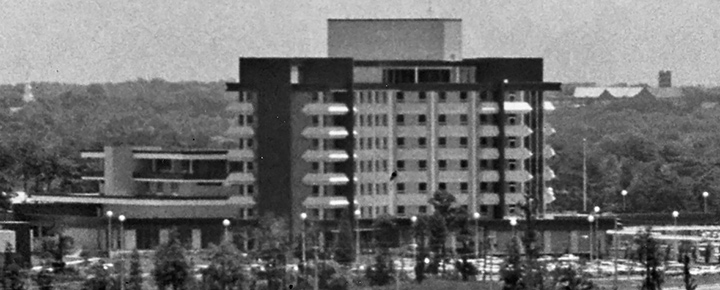




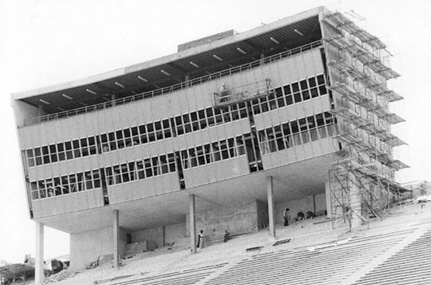



 On November 4, 1967, the stadium hosted its first sporting event when the
"Tampa U" Spartans hosted the University of Tennessee Volunteers. The Spartans
lost that game, a 38-0 shellacking by the more nationally regarded University of
Tennessee Volunteers. The fans in the stands may not have liked the
result of the game, but the stadium itself was a big hit.
On November 4, 1967, the stadium hosted its first sporting event when the
"Tampa U" Spartans hosted the University of Tennessee Volunteers. The Spartans
lost that game, a 38-0 shellacking by the more nationally regarded University of
Tennessee Volunteers. The fans in the stands may not have liked the
result of the game, but the stadium itself was a big hit. 

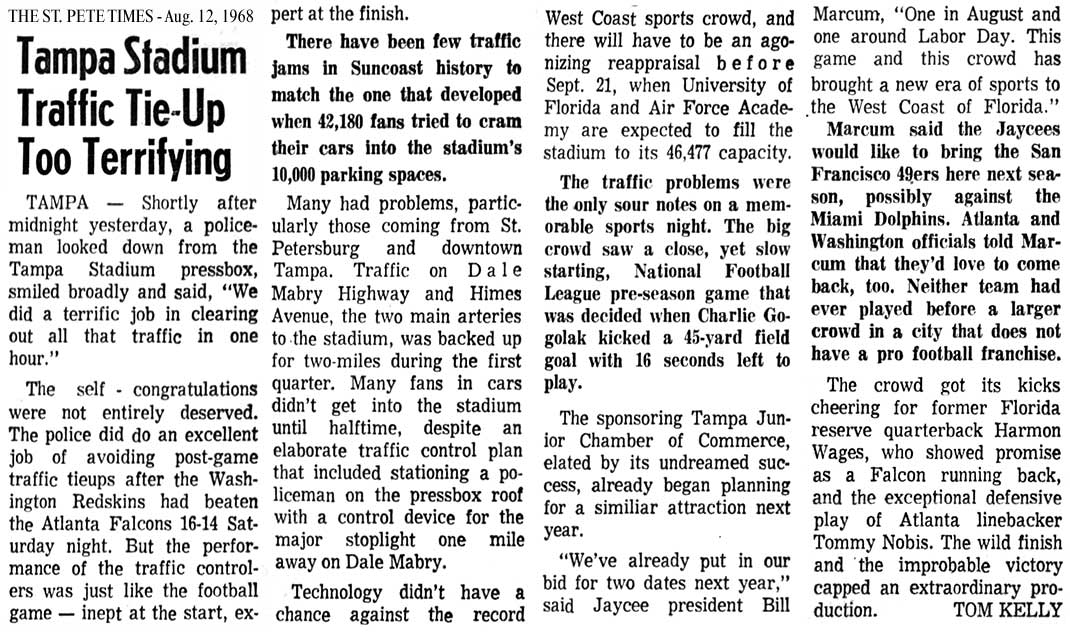
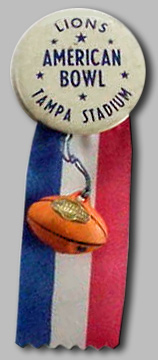








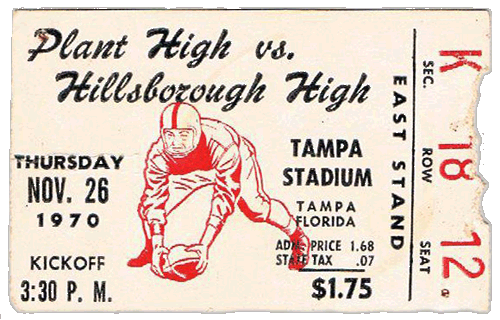
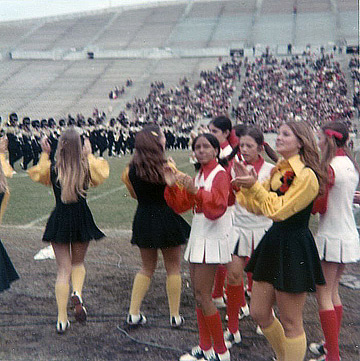




















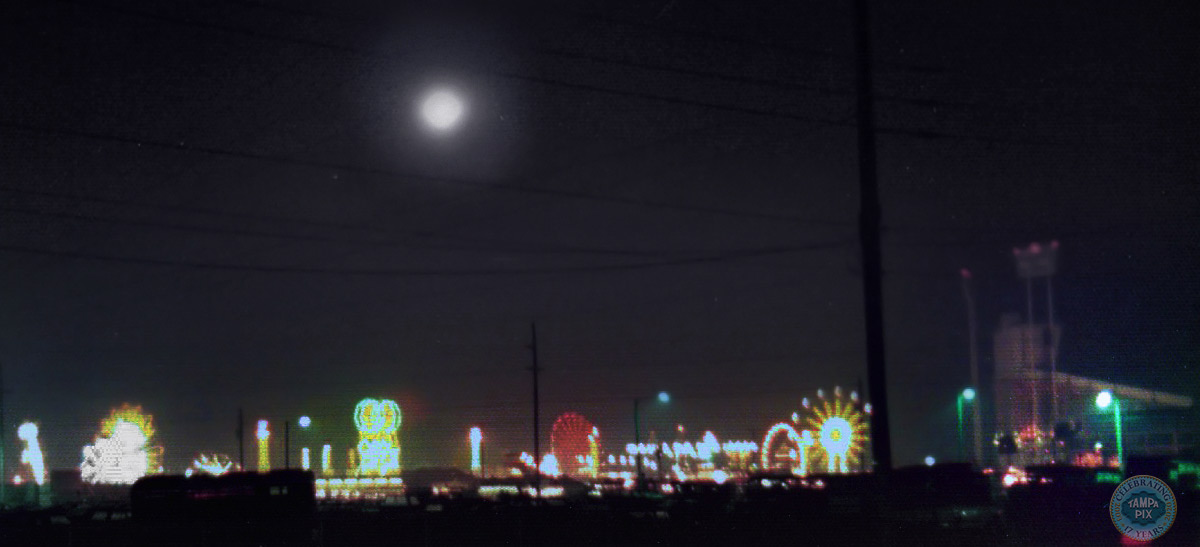

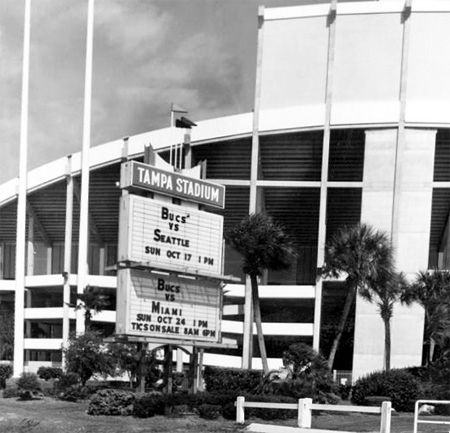



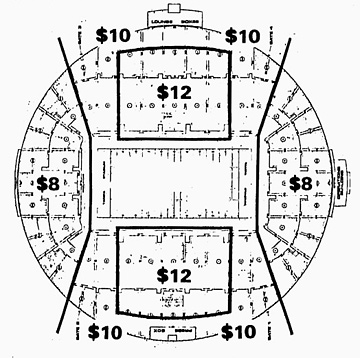








 On June 3, 1981, the NFL awarded Tampa Stadium its first Super Bowl: Super
Bowl XVIII (18) which was held on January 22, 1984. During the Super Bowl
balloting, Tampa beat Dallas, Detroit, Miami, New Orleans and Pasadena.
On June 3, 1981, the NFL awarded Tampa Stadium its first Super Bowl: Super
Bowl XVIII (18) which was held on January 22, 1984. During the Super Bowl
balloting, Tampa beat Dallas, Detroit, Miami, New Orleans and Pasadena. 








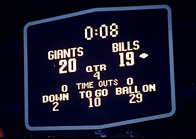 Bowl remains the only one decided by one
point to date in 2011 and the first one played without a turnover.
Bowl remains the only one decided by one
point to date in 2011 and the first one played without a turnover.


